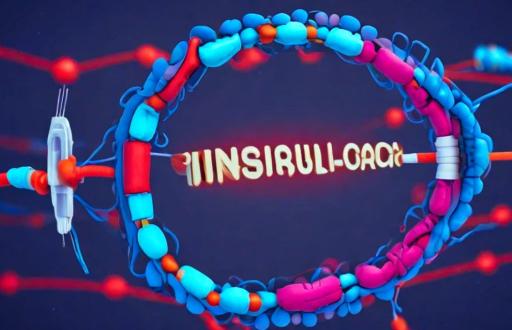Diabetes is a chronic condition that affects millions of people around the globe, often lurking in the shadows, undetected until it manifests in more severe health complications. The World Health Organization estimates that over 422 million people worldwide are living with diabetes, a number that continues to rise alarmingly. Understanding the warning signs of diabetes is not just a matter of awareness; it’s a crucial step in disease prevention and early intervention. In this comprehensive article, we will delve into seven key indicators that may signal the onset of diabetes, empowering you to take proactive steps toward your health and well-being.
1. Increased Thirst and Frequent Urination
Imagine this: you wake up in the middle of the night, parched, and find yourself making multiple trips to the bathroom. This relentless thirst, known as polydipsia, coupled with frequent urination (or polyuria), can be a telltale sign of diabetes. When blood sugar levels soar, the kidneys work overtime to filter out the excess glucose, leading to dehydration and an insatiable thirst.
The Mechanism Behind It
When your blood glucose levels rise beyond a certain threshold, your kidneys attempt to excrete the excess sugar through urine. This process not only leads to increased urination but also causes your body to lose fluids, resulting in dehydration. Consequently, your brain signals thirst, prompting you to drink more fluids. If you find yourself reaching for that water bottle more often than usual, it might be time to consult a healthcare professional.
What to Watch For
- Increased thirst: You may feel an unquenchable thirst that persists despite drinking fluids.
- Frequent urination: You might notice that you’re visiting the restroom more often, especially at night.
2. Unexplained Weight Loss

Top On Sale Product Recommendations!
GZAI 40k Vacuum Cavitation Machine – Professional Body Slimming and Massage Device for Weight Loss, Pain Relief, Skin Tightening
Price Now: EUR 195.19 (Original price: EUR 229.63, 15% off)
It sounds counterintuitive, doesn’t it? Gaining weight is often associated with diabetes, yet unexplained weight loss can also be a red flag. When the body cannot utilize glucose effectively, it begins to break down fat and muscle for energy, resulting in weight loss.
The Science of Weight Loss in Diabetes
In diabetes, particularly Type 1, the body’s inability to produce insulin means that glucose cannot enter the cells. As a result, the body turns to alternative energy sources, breaking down fat and muscle tissue. This can lead to significant weight loss, even if you’re eating normally or even more than usual.
Signs to Look For
- Sudden weight loss: If you’re shedding pounds without changing your diet or exercise routine, don’t brush it off.
- Fatigue: The energy deficit from not utilizing glucose can lead to feelings of fatigue and weakness.
3. Fatigue and Weakness
Feeling unusually tired? It’s not just a busy week at work or a lack of sleep. Fatigue is a common symptom of diabetes, stemming from the body’s inability to convert glucose into energy. When cells are starved of the fuel they need, you may experience a profound sense of exhaustion.
Understanding Fatigue in Diabetes
When your body cannot effectively use glucose for energy, it can lead to a state of chronic fatigue. This is often exacerbated by the other symptoms of diabetes, such as frequent urination and dehydration. The cumulative effect can leave you feeling drained and lethargic.
Key Indicators
- Persistent tiredness: If you find yourself dragging through the day, it’s worth investigating further.
- Difficulty concentrating: You may also notice that your cognitive functions are impaired, making it hard to focus or think clearly.

4. Blurred Vision
Have you noticed that your vision isn’t as sharp as it used to be? Blurred vision can occur when high blood sugar levels cause the lenses of your eyes to swell, affecting your ability to focus. This symptom can fluctuate, often improving when blood sugar levels stabilize.
The Impact of High Blood Sugar on Vision
High blood sugar can lead to changes in the shape and flexibility of the eye’s lens, resulting in blurred vision. If left untreated, prolonged high blood sugar can lead to more severe eye conditions, including diabetic retinopathy, which can cause permanent vision loss.
What to Monitor
- Fluctuating vision: If you experience episodes of blurred vision that come and go, it’s essential to consult a healthcare provider.
- Other visual disturbances: Look out for other symptoms like dark spots or flashes of light.
5. Slow-Healing Sores and Frequent Infections
If you’ve noticed that cuts and bruises take longer to heal than they used to, or if you’re experiencing frequent infections, it could be a sign of diabetes. High blood sugar levels can impair circulation and weaken the immune system, making it harder for your body to fight off infections and heal wounds.
The Healing Process and Diabetes
When blood sugar levels are elevated, the body’s ability to deliver oxygen and nutrients to tissues is compromised. This can lead to slower healing times for injuries and an increased susceptibility to infections. Common areas where infections may occur include the skin, gums, and urinary tract.
Signs to Be Aware Of
- Prolonged healing: If you notice that minor cuts or scrapes take an unusually long time to heal, it’s a cause for concern.
- Recurrent infections: Frequent occurrences of infections, particularly in the skin or urinary tract, should prompt a discussion with your healthcare provider.
6. Tingling or Numbness in Extremities
Do you experience tingling, numbness, or a “pins and needles” sensation in your hands or feet? This could be a sign of diabetic neuropathy, a condition that affects the nerves due to prolonged high blood sugar levels. Early detection is key, as managing blood sugar can help prevent further nerve damage.
Understanding Diabetic Neuropathy
Diabetic neuropathy occurs when high blood sugar levels damage the nerves, particularly in the extremities. This can lead to a range of sensations, from tingling and numbness to pain and sensitivity. The condition can significantly impact your quality of life, making it essential to address any symptoms promptly.
Symptoms to Monitor
- Nerve sensations: Pay attention to any unusual sensations in your hands or feet, such as tingling or numbness.
- Pain: Some individuals may experience sharp or burning pain in their extremities, which can be debilitating.
7. Dark Patches of Skin
A condition known as acanthosis nigricans can manifest as dark, velvety patches of skin, often found in the folds of the neck, armpits, or groin. This can be a sign of insulin resistance, a precursor to type 2 diabetes. If you notice these changes in your skin, it’s essential to discuss them with your healthcare provider.

The Connection to Insulin Resistance
Acanthosis nigricans is often associated with insulin resistance, where the body’s cells do not respond effectively to insulin. This can lead to elevated insulin levels in the blood, causing changes in skin pigmentation. While the condition itself is not harmful, it can be an indicator of underlying metabolic issues.
What to Look For
- Skin changes: Look for dark, velvety patches in areas where skin folds occur.
- Other symptoms: If you notice these skin changes alongside other symptoms of diabetes, it’s crucial to seek medical advice.
Conclusion
Recognizing the warning signs of diabetes is vital for disease prevention and early intervention. If you or someone you know is experiencing any of these symptoms, it’s crucial to seek medical advice promptly. Early detection can lead to effective management and a healthier future. Remember, your health is in your hands—stay informed, stay vigilant, and take action.
FAQ
What are the main types of diabetes?
The main types of diabetes are Type 1, Type 2, and gestational diabetes. Type 1 is an autoimmune condition where the body doesn’t produce insulin, while Type 2 is characterized by insulin resistance. Gestational diabetes occurs during pregnancy and usually resolves after childbirth.
Can diabetes be prevented?
Yes, many cases of Type 2 diabetes can be prevented through lifestyle changes such as maintaining a healthy diet, regular physical activity, and managing weight. Early intervention is key.
How is diabetes diagnosed?
Diabetes is diagnosed through blood tests that measure blood sugar levels. Common tests include the fasting blood sugar test, the oral glucose tolerance test, and the A1C test.
What should I do if I suspect I have diabetes?
If you suspect you have diabetes, it’s important to consult a healthcare professional. They can provide a proper diagnosis and recommend a treatment plan tailored to your needs.
What lifestyle changes can help manage diabetes?
Managing diabetes often involves a combination of dietary changes, regular exercise, weight management, and monitoring blood sugar levels. Medications may also be necessary, depending on the type and severity of diabetes.
Are there any complications associated with diabetes?
Yes, diabetes can lead to various complications, including heart disease, kidney damage, nerve damage, and vision problems. Managing blood sugar levels effectively can help reduce the risk of these complications.
How often should I get screened for diabetes?
The American Diabetes Association recommends that adults aged 45 and older get screened for diabetes every three years. Those with risk factors, such as obesity or a family history of diabetes, may need to be screened more frequently.







